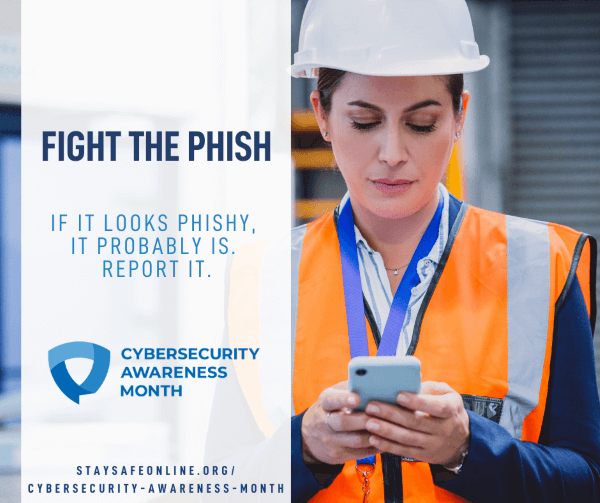
October is National Cyber Security Awareness Month, and all month long, Consolidated will be sharing information to help our customers, employees and our communities stay safe online.
Even as hackers and bad actors find more sophisticated ways to attack, the old tried and true tactic of phishing continues to wreak havoc.
Despite often being overlooked in terms of hype, phishing has been a mainstay in the cybersecurity threat landscape for decades. In fact, 43 percent of cyberattacks in 2020 featured phishing or pre-texting, while 74 percent of US organizations experienced a successful phishing attack last year alone. That means phishing is one of the most dangerous “action varieties” to an organization’s cybersecurity health. As a result, the need for proper anti-phishing hygiene and best practices is an absolute must.
With that in mind, here are a few best practices and tips for dealing with phishing threats.
- Know the Red Flags
Phishers are masters of making their content and interactions appear real. Phishing emails and websites may look legit, so it can be difficult to discern whether content is genuine or a potential threat. Knowing the red flags is crucial! Awkward and unusual formatting, clunky language with grammatical errors, overly explicit calls to click a hyperlink or open an attachment, and subject lines that create a sense of urgency are all hallmarks of phishing.
- Verify the Source
Phishing content comes in a variety of ways, however, many phishes will try to impersonate someone you already know -- such as a colleague, service provider or friend -- as a way to trick you into believing their malicious content is actually trustworthy. Don’t fall for it! If you see any red flags, or you just feel like something is off, reach out directly to the individual to confirm whether the content is authentic and safe (but don’t just hit “reply!”). If it’s not actually from your friend or colleague, do not reply and report the phishing to your network security team, or report it as spam through your email platform.
- Be Aware of Vishing and Other Phishing Offshoots
As more digital natives have come online and greater awareness has been spread about phishing, bad actors have begun to diversify their phishing efforts beyond traditional email. For example, voice phishing -- or vishing -- has become a primary alternative for bad actors looking to gain sensitive information from unsuspecting individuals. Similar to conventional phishing, vishing is typically executed by individuals posing as a legitimate organization -- such as a healthcare provider or insurer -- and asking for sensitive information. Simply put, it is imperative that individuals be wary of any sort of communication that asks for personal information whether it be via email, phone, text or chat -- especially if the communication is unexpected. If anything seems suspicious, again, break-off the interaction immediately and contact the company directly to confirm the legitimacy of the communications.
Phishing may be “one of the oldest tricks in the book,” but it is still incredibly effective. And although it may be hard to spot when you’re in the midst of a phishing attempt, by exercising caution and deploying these few fundamentals, individuals and organizations can drastically reduce the chances of falling victim to a phishing attack.